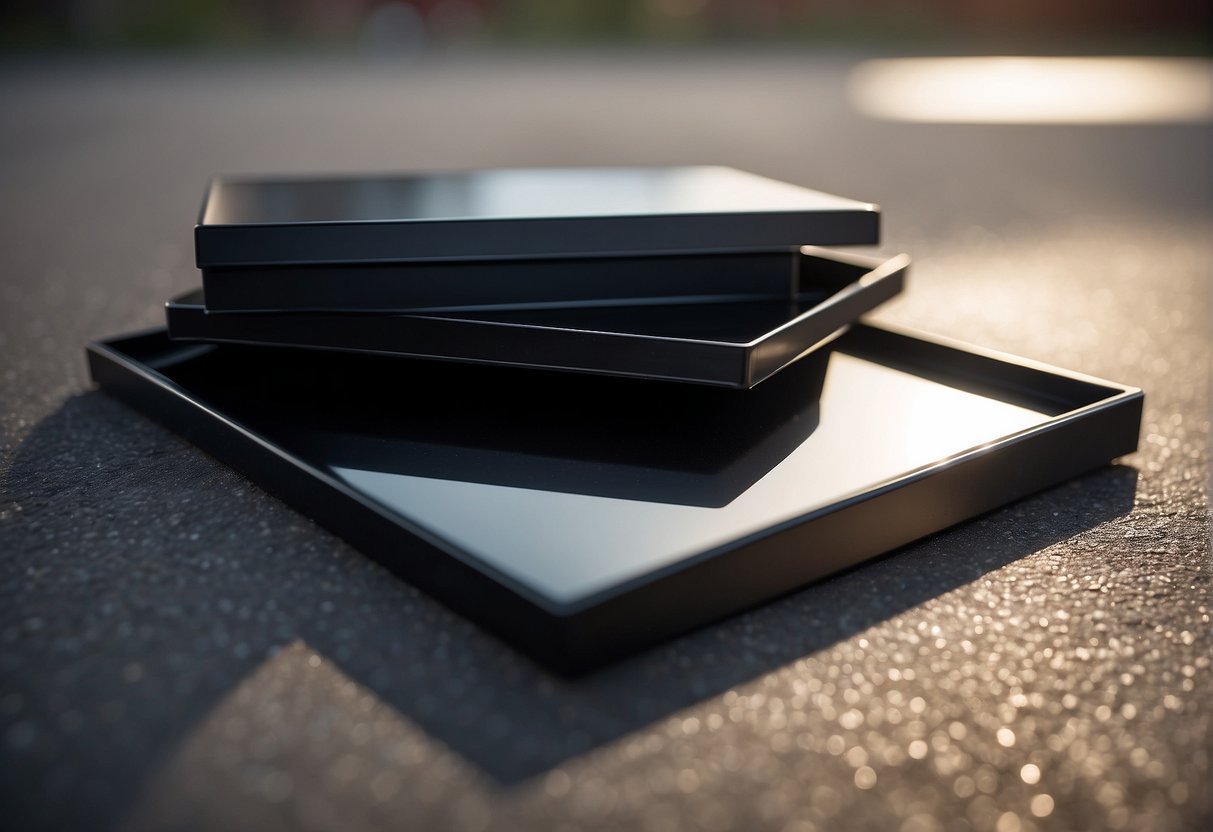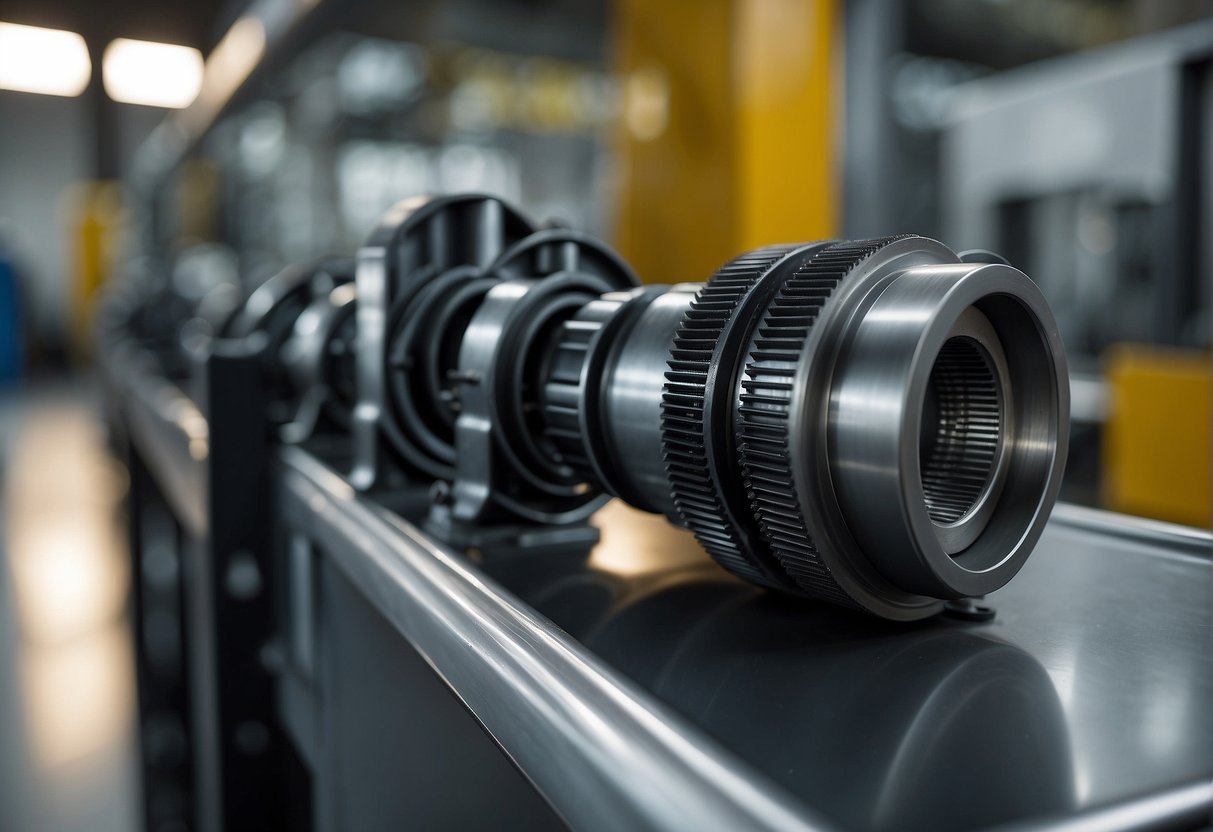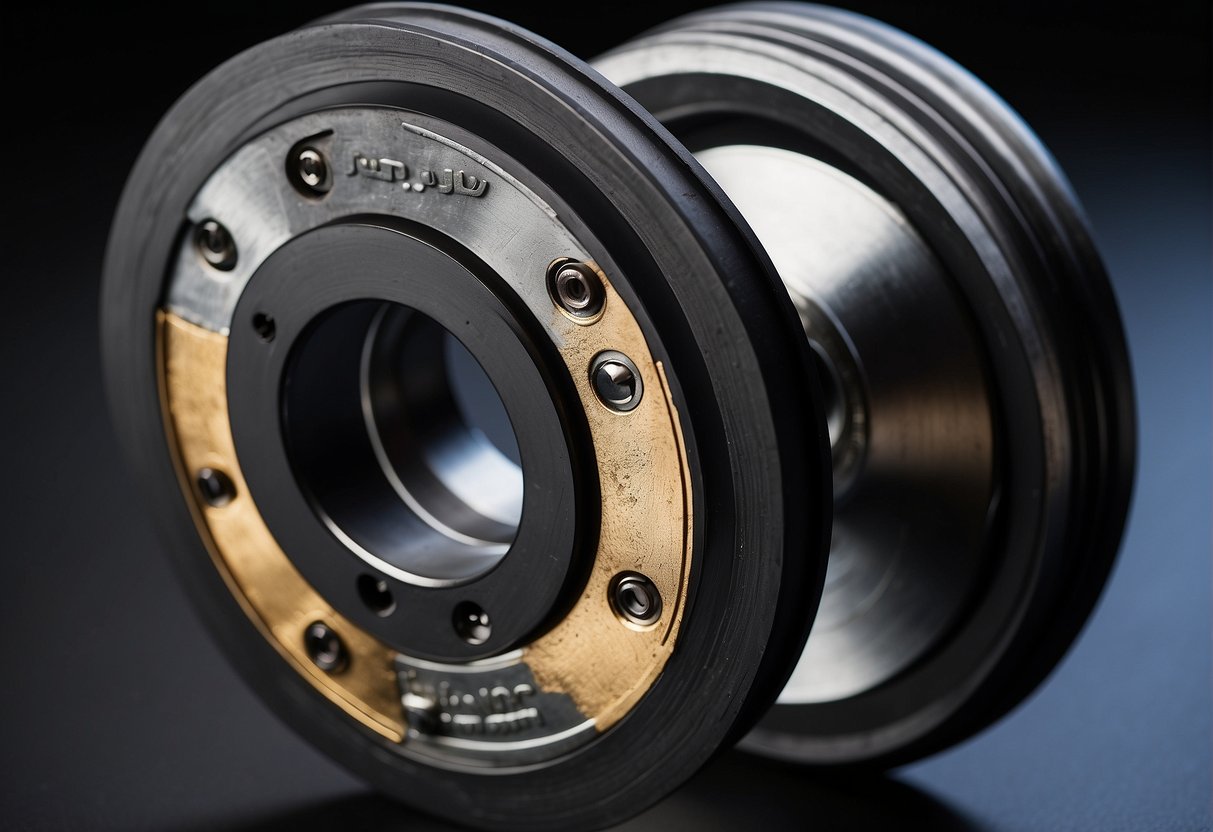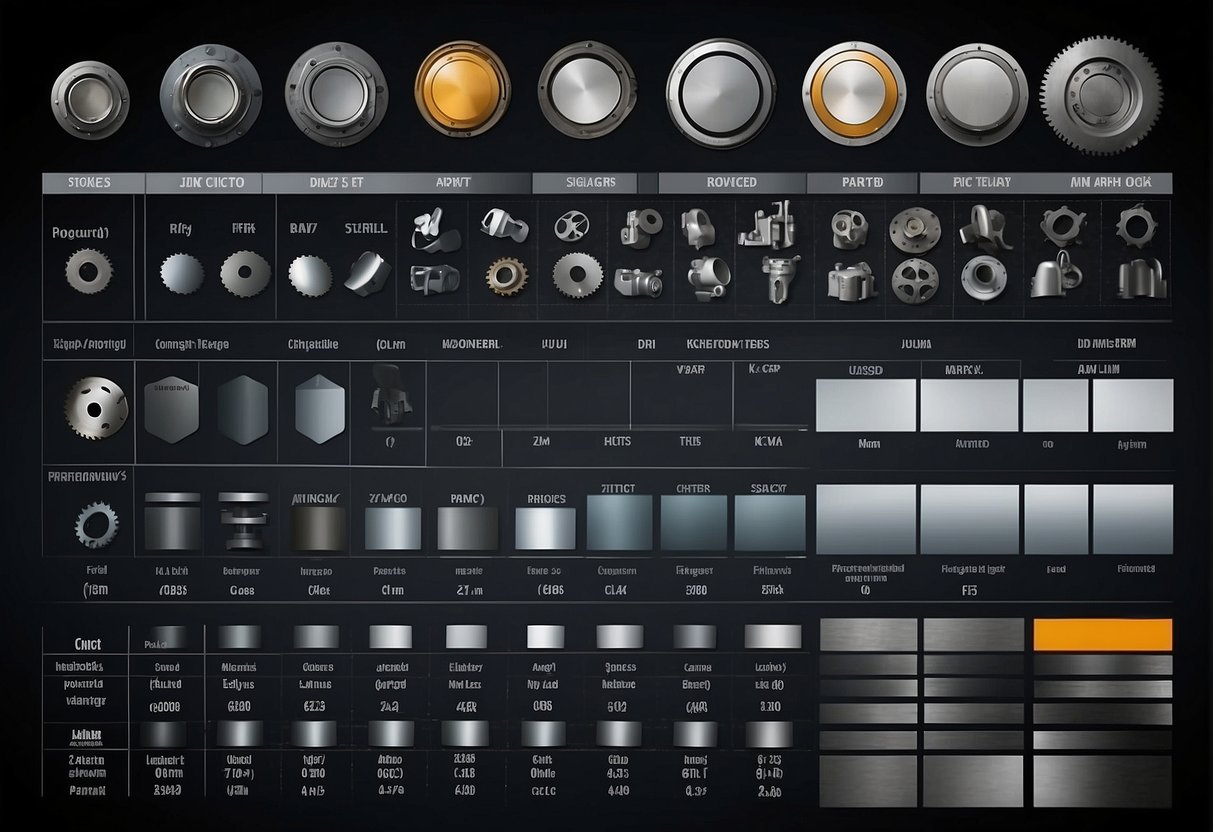Black oxide and zinc plating are two popular finishes for metal components. These finishes provide different advantages and disadvantages depending on the application and industry. Black oxide is a conversion coating that creates a black finish with iron oxide, while zinc plating is an electroplating process that provides a protective layer of zinc.
Understanding the differences between black oxide and zinc plating is crucial for choosing the best finish for your needs. Factors such as corrosion resistance, durability, physical and mechanical properties, and maintenance and care should be considered when selecting a finish. Additionally, the application and industry of the metal component should also be taken into account to ensure optimal performance.
Key Takeaways
- Black oxide and zinc plating are two popular finishes for metal components that provide different advantages and disadvantages.
- Factors such as corrosion resistance, durability, physical and mechanical properties, and maintenance and care should be considered when selecting a finish.
- The application and industry of the metal component should also be taken into account to ensure optimal performance.
Understanding Black Oxide and Zinc Plating
As a manufacturer, it’s essential to choose the right coating or finish for your metal components. Two popular options are black oxide and zinc plating. In this section, I will provide an overview of these two finishes and help you understand the differences between them.
Chemical Composition and Process
Black oxide is a chemical conversion coating that creates a thin layer of magnetite (Fe3O4) on the surface of the metal. This layer provides excellent corrosion resistance and a deep black color. The process involves immersing the metal in an alkaline solution, followed by a rinse and an oxidizing agent. The result is a black, matte finish that is aesthetically pleasing.
On the other hand, zinc plating is an electrochemical process that involves applying a thin layer of zinc to the surface of the metal. Zinc is an excellent barrier against corrosion and provides a bright, shiny finish. The process involves immersing the metal in a solution of zinc salts and applying an electric current to the metal. This causes the zinc to be deposited on the surface of the metal.
Visual Appearance and Aesthetics
Black oxide and zinc plating provide different visual appearances and aesthetics. Black oxide provides a deep, matte black finish that is ideal for applications where aesthetics are important. The finish is uniform and consistent, and it does not reflect light, making it suitable for applications where glare is a concern.
Zinc plating, on the other hand, provides a bright, shiny finish that is aesthetically pleasing. The finish is uniform and consistent, and it reflects light, making it ideal for applications where visibility is important.
In summary, black oxide and zinc plating are two popular finishes for metal components. Black oxide provides a deep, matte black finish that is ideal for applications where aesthetics are important, while zinc plating provides a bright, shiny finish that is aesthetically pleasing and suitable for applications where visibility is important.
Corrosion Resistance and Durability
When it comes to choosing between black oxide and zinc plating, one of the most important factors to consider is their corrosion resistance and durability. Both finishes can provide a protective coating for the metal, but they differ in their mechanisms of corrosion protection and their suitability for different environments.
Corrosion Protection Mechanisms
Zinc plating is a type of sacrificial coating, which means that it corrodes preferentially to the metal substrate it is protecting. This process creates a protective layer of zinc oxide on the surface of the metal, which acts as a barrier against further corrosion. The zinc coating also provides cathodic protection to the underlying metal, which means that it attracts and absorbs any corrosive ions that come into contact with the metal surface, preventing them from reacting with the metal.
Black oxide, on the other hand, is a conversion coating that chemically converts the surface of the metal into a thin layer of iron oxide. This layer provides a barrier against further corrosion by preventing oxygen and moisture from coming into contact with the metal surface. Unlike zinc plating, black oxide does not provide sacrificial protection to the underlying metal, which means that it is less effective in corrosive environments.
Longevity and Environmental Suitability
When it comes to longevity, zinc plating is generally more durable than black oxide. Zinc is a harder and more abrasion-resistant metal than iron, which means that it can withstand more wear and tear over time. Zinc plating is also more resistant to rust and corrosion in harsh environments, such as those with high humidity or exposure to salt water.
Black oxide, on the other hand, is more suitable for environments where aesthetics are a priority. It provides a sleek, matte black finish that is often used in decorative applications, such as on firearms or musical instruments. Black oxide is also more environmentally friendly than zinc plating, as it does not require the use of toxic chemicals in the plating process.
In summary, when it comes to corrosion resistance and durability, zinc plating and black oxide have different mechanisms of protection and are suitable for different environments. Zinc plating provides sacrificial protection to the underlying metal and is more durable and resistant to rust and corrosion in harsh environments. Black oxide provides a decorative, matte black finish and is more environmentally friendly, but is less effective in corrosive environments.
Applications and Industries
Typical Uses in Various Industries
As a coating, black oxide is commonly used in the firearms industry due to its aesthetic appeal and corrosion resistance. It is also used in the automotive industry to provide a decorative finish on components such as bolts and nuts. Zinc plating, on the other hand, is commonly used in the fastener industry due to its excellent corrosion resistance and low cost. It is also used in the marine industry to protect metal components from saltwater corrosion.
In the medical industry, black oxide is used to coat surgical instruments due to its biocompatibility and corrosion resistance. Zinc plating is also used in the medical industry, but it is typically limited to non-implantable applications due to its potential toxicity.
In the electronics industry, both black oxide and zinc plating are used to protect metal components from corrosion. Black oxide is often used for its electrical conductivity, while zinc plating is used for its ability to prevent galvanic corrosion.
Selection Criteria for Materials and Coatings
When selecting a coating for a particular application, it is important to consider factors such as the operating environment, the desired appearance, and the level of corrosion resistance required. For example, in marine environments, a coating with high corrosion resistance is essential to prevent rust and degradation of the metal components. In contrast, in the electronics industry, a coating with good electrical conductivity may be more important.
When selecting a material for a particular application, it is important to consider factors such as the strength, ductility, and corrosion resistance of the material. For example, in the fastener industry, a material with high strength and corrosion resistance is essential to ensure the longevity and reliability of the fastener. In contrast, in the medical industry, a material with good biocompatibility and corrosion resistance is essential to ensure the safety and effectiveness of the medical device.
Overall, the choice between black oxide and zinc plating depends on the specific application and requirements. Both coatings have their own unique advantages and disadvantages, and it is important to carefully consider these factors before making a final decision.
Physical and Mechanical Properties
When it comes to choosing between black oxide and zinc plating for fasteners, components, or metal parts, one of the most important factors to consider is their physical and mechanical properties. In this section, I will discuss the surface hardness, wear resistance, electrical conductivity, and thermal conductivity of black oxide and zinc plating.
Surface Hardness and Wear Resistance
Black oxide is a conversion coating that forms a thin layer of magnetite (Fe3O4) on the surface of steel parts. This layer provides moderate corrosion resistance and enhances the surface hardness of the steel. According to ThePipingMart Blog, black oxide can increase the surface hardness of steel by up to 50% and improve its wear resistance by up to 10 times compared to untreated steel.
Zinc plating, on the other hand, is an electroplating process that deposits a thin layer of zinc on the surface of steel parts. This layer provides excellent corrosion resistance but does not significantly enhance the surface hardness or wear resistance of the steel. According to Chief Delphi, zinc plating can slightly decrease the surface hardness of steel due to the hydrogen embrittlement phenomenon that can occur during the plating process.
Electrical and Thermal Conductivity
Black oxide and zinc plating can also affect the electrical and thermal conductivity of steel parts. Black oxide has a slightly lower electrical conductivity than bare steel due to the insulating properties of magnetite. However, this effect is negligible for most applications. According to BW Industrial Sales, black oxide has a thermal conductivity of about 0.7 W/mK, which is slightly lower than bare steel.
Zinc plating has a higher electrical conductivity than black oxide due to the conductive properties of zinc. However, this effect is also negligible for most applications. According to CNCLathing.com, zinc plating has a thermal conductivity of about 1.16 W/mK, which is slightly higher than bare steel.
In summary, black oxide can provide moderate corrosion resistance, enhance the surface hardness and wear resistance of steel parts, and have slightly lower electrical and thermal conductivity than bare steel. Zinc plating can provide excellent corrosion resistance, have slightly lower surface hardness and wear resistance than untreated steel, and have higher electrical and thermal conductivity than black oxide.
Maintenance and Care
Cleaning and Post-Treatment
Both black oxide and zinc plating finishes require regular cleaning to maintain their appearance and functionality. For black oxide finishes, it is recommended to clean the surface with a mild soap and water solution, followed by drying with a soft cloth. Avoid using abrasive cleaners or steel wool as they can damage the finish. If the surface becomes scratched or damaged, it should be recoated with black oxide to prevent rust and corrosion.
For zinc plated finishes, it is recommended to clean the surface with a mild detergent and water solution, followed by drying with a soft cloth. Avoid using harsh chemicals or abrasive cleaners as they can damage the finish. If the surface becomes scratched or damaged, it should be recoated with zinc plating to prevent rust and corrosion.
Both finishes can be treated with oil, wax, lacquer, or paint to provide additional protection and enhance their appearance. However, it is important to follow the manufacturer’s instructions and ensure that the finish is compatible with the underlying plating.
Inspection and Replacement Intervals
Regular inspection of black oxide and zinc plated finishes is recommended to detect any signs of wear, corrosion, or damage. For black oxide finishes, it is important to check for any rust or discoloration, as this can indicate that the coating has been compromised. For zinc plated finishes, it is important to check for any signs of corrosion or flaking, as this can indicate that the coating has worn away.
Replacement intervals for black oxide and zinc plated finishes depend on a variety of factors, including the environment in which the component is used, the level of wear and tear, and the quality of the original plating. In general, it is recommended to replace components with worn or damaged finishes to prevent further corrosion or damage.
Frequently Asked Questions
What are the primary differences in corrosion resistance between black oxide and zinc plated finishes?
Both black oxide and zinc plated finishes provide a degree of corrosion resistance to metal components. However, zinc plating offers superior corrosion resistance compared to black oxide. Zinc plating can provide protection against rust and other forms of corrosion for up to 500 hours in a salt spray test, while black oxide may only provide protection for up to 24 hours.
How do the costs of black oxide finishing compare to zinc plating?
The cost of black oxide finishing is generally lower than that of zinc plating. Black oxide finishing is a chemical conversion process that does not require the use of electricity, making it a more cost-effective option. Zinc plating, on the other hand, requires electricity to deposit the zinc onto the metal surface, making it a more expensive process.
Can black oxide and zinc plated surfaces be painted, and how does paint adherence differ?
Both black oxide and zinc plated surfaces can be painted. However, paint adherence may differ between the two finishes. Zinc plating provides a smoother surface for paint to adhere to, resulting in better paint adherence compared to black oxide. Black oxide may require additional surface preparation to ensure good paint adherence.
Which is more suitable for automotive applications: black oxide or zinc plated components?
Zinc plated components are generally more suitable for automotive applications due to their superior corrosion resistance compared to black oxide. Automotive components are often exposed to harsh environmental conditions, and zinc plating provides better protection against rust and other forms of corrosion.
What are the advantages of using black oxide bolts over zinc plated ones?
Black oxide bolts offer several advantages over zinc plated ones. Black oxide provides a matte black finish that is aesthetically pleasing and can help reduce glare. Additionally, black oxide does not affect the dimensions of the bolt, making it a good option for precision applications. Finally, black oxide provides a degree of corrosion resistance that is suitable for many applications.
In terms of durability and protection, how does black oxide compare to black phosphate screws?
Black oxide and black phosphate are both chemical conversion coatings that provide a degree of corrosion resistance to metal components. However, black phosphate provides superior corrosion resistance compared to black oxide. Black phosphate can provide protection against rust and other forms of corrosion for up to 1500 hours in a salt spray test, while black oxide may only provide protection for up to 24 hours.

Hi, I’m Sal Muller of Tooltrip.com. My DIY experience led me to understand essential power tools for home projects. Tooltrip.com guides enthusiasts and professionals in choosing right tools for any job. I provide concise top tool reviews for easier, efficient DIY.






